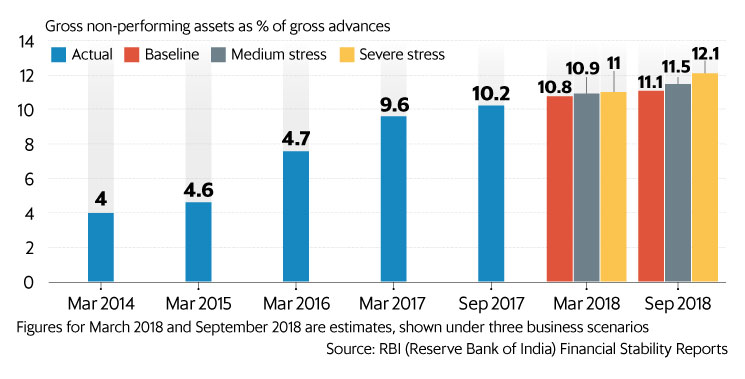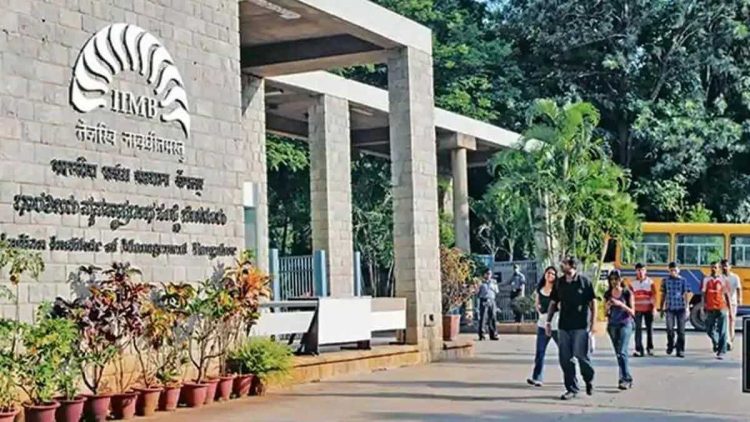Former Reserve Bank of India Governor Raghuram Rajan has cautioned the government against giving loans and loan waivers without “due diligence” as these may be preparing the environment for future non-performing assets (NPAs).
His comments, in the reply to the estimates committee of parliament, which had sought his views on the NPA crisis, come with a special reference to MUDRA loans given by the NDA government at the Centre and loan waivers initiated by Uttar Pradesh and followed by many other states.
He also warned against the Credit Guarantee Scheme for MSME (CGTMSE) run by SIDBI which, he said, was a growing contingent liability
“Credit targets are sometimes achieved by abandoning appropriate due diligence, creating the environment for future NPAs.,” Rajan said suggesting the Centre come out with an all-party agreement to this effect in the “nation’s interest”, especially given the impending elections.
“Both MUDRA loans as well as the Kisan Credit Card, while popular, have to be examined more closely for potential credit risk. The Credit Guarantee Scheme for MSME (CGTMSE) run by SIDBI is a growing contingent liability and needs to be examined with urgency,” he said.
Rajan said agriculture needed serious attention, but not through loan waivers.
“Loan waivers, as RBI has repeatedly argued, vitiate the credit culture, and stress the budgets of the waiving state or central government. They are poorly targeted, and eventually reduce the flow of credit,” the former RBI Governor said.
He also said the amount banks recovered from defaulted debt was both meagre and long delayed. The DRTs and SARFAESI were initially successful before they became overburdened as large promoters understood how to game them.
The inefficient loan recovery system gave promoters tremendous power over lenders. Sometimes promoters offered low one-time settlements (OTS) knowing that the system would allow the banks to collect even secured loans only after years.

Former RBI Governor also suggested below steps so that to prevent recurrence of NPA issue .
Improve governance of public sector banks and distance them from the government. Public sector bank boards are still not adequately professionalised, and the government still decides board appointments, with the inevitable politicisation.
Banks should not be left leaderless for long periods of time. The date of retirement of CEOs is well known and the government should be prepared well in advance. An entity like the Bank Board Bureau should decide appointments.
Bring more of outside talent. There is already a talent deficit in internal PSB candidates in coming years because of a hiatus in recruitment in the past.
Compensation structures in PSBs also need rethinking, especially for high level outside hires. There will be internal resistance, but lakhs of crores of national assets cannot be held hostage to the career concerns of a few.
Risk management processes still need substantial improvement in PSBs. Compliance is still not adequate, and cyber risk needs greater attention.
Improve the process of project evaluation and monitoring to lower the risk of project NPAs.
Real risks have to be mitigated where possible and shared where not. Real risk mitigation requires ensuring that key permissions for land acquisition and construction are in place up front, while key inputs and customers are tied up through purchase agreements. Where these risks cannot be mitigated, they should be shared contractually between the promoter and financiers, or a transparent arbitration system agreed upon.
An appropriately flexible capital structure should be in place. The more the risks, the more the equity component should be and the greater the flexibility in the debt structure.
Promoters should be incentivised to deliver, with significant rewards for on-time execution and debt repayment.
Where possible, corporate debt markets, either through direct issues or securitised project loan portfolios, should be used to absorb some of the initial project risks. More such arm’s length debt should typically refinance bank debt when construction is over.
Financiers should put in a robust system of project monitoring and appraisal, including where possible, careful real-time monitoring of costs. Projects that are going off track should be restructured quickly before they become unviable.
Finally, the incentive structure for bankers should be worked out so that they evaluate, design, and monitor projects carefully, and get significant rewards if these work out.
Strengthen the recovery process further. Both the out of court restructuring process and the bankruptcy process need to be strengthened and made speedy.
Government should focus on sources of the next crisis, not just the last one. In particular, the government should refrain from setting ambitious credit targets or waiving loans.
Credit targets are sometimes achieved by abandoning appropriate due diligence, creating the environment for future NPAs. Loan waivers vitiate the credit culture and stress the budgets of the waiving state or central government. They are poorly targeted, and eventually reduce the flow of credit.









